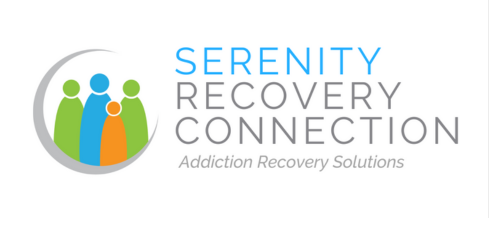The Link between Schizophrenia and Marijuana Use
The Link between Schizophrenia and Marijuana Use
By, Julia Brownfield, MPHE
Director of Programs Springs Recovery Connection
Marijuana is dried leaves, flowers, and stems derived from the hemp plant. The plant contains a mind-altering chemical called tetrahydrocannabinol (THC). THC is the part of the plant that gets you high, and it’s also highly addictive. According to the National Institute on Drug Abuse (NIDA), marijuana is the most commonly used illicit drug in the United States (2017). The number of individuals who once believed marijuana to be risky is decreasing. These views may have been skewed by the legalization of marijuana in some states. Short-term use effects of marijuana include changes in mood, memory, movement, problem-solving abilities, and disruption of divergent thinking hence diminishing a person’s ability to be creative. Long-term marijuana use affects mood, sleeping patterns, and brain development. These brain changes can last for a long time or could be permanent (4).
The THC in marijuana acts on brain cell receptors and interrupts the natural role by over-activating the parts of the brain that have the largest number of those receptors. Brain scans of frequent cannabis users reveal a decreased activity in prefrontal regions and reduced volume of the hippocampus. These differences are noticeably more prominent if the user started in adolescence with a marked decline in brain activity, including IQ. The brain is highly active from gestation through childhood and adolescence until age 21. During these years, the brain is more vulnerable to chemicals such as THC. Repeated use during adolescence may cause long-lasting changes in brain function (7).
THC levels in the marijuana of today are much greater than they were years ago. In the 1990s THC levels in marijuana were 3.7%, ten years ago 8-15%, and today THC levels are 20-40%, with levels being higher in marijuana concentrates and edibles at 40-99%. These high levels are due to illegal plant imports and genetic modifications (4). Plants are being enhanced for those already addicted and can no longer feel the high they used to. Therefore, a person who is new to the marijuana of today is exposed to toxic levels of THC; hence there is a greater chance of harm, addiction, and adverse psychotic reactions.
Marijuana and Addiction
Regular, heavy marijuana use can lead to substance use disorder (SUD), which turns into a more severe case of addiction. Research shows that about 30% of those that use cannabis regularly develop substance use disorder. Long-time users who tried to quit often report that it’s difficult, and withdrawal symptoms include grouchiness, sleeplessness, decreased appetite, anxiety, and intense cravings. Plus, those that report regular or chronic marijuana use <on a long-term basis> have lower life satisfaction, poorer mental health, poorer physical health (including acute bronchitis, ear infections, & more accident-related injuries, including car accidents), and more relationship problems. They’re more likely to drop out of high school and less likely to go to college (4).
Is Marijuana Medicine?
For a drug to be deemed a “medicine,” it must be approved by the Food and Drug Administration (FDA). The FDA has not found or approved marijuana as a safe or effective drug for medical purposes. Marijuana has not been approved as a medicine because it contains harmful chemicals, THC, is highly addictive, and has an increased potential for abuse that could lead to addiction (3). However, research has shown that specific properties in cannabis may be helpful to treat nausea, appetite, and seizures. Therefore, the FDA has approved a synthetic cannabis pill for patients that suffer frommultiple sclerosis, cancer, AIDS, and seizure disorder. The pill form is called Marinol and contains a synthetic THC called Dronabinol. The synthetic levels of THC are very low, at 2%. A primary physician must prescribe the pills and are regulated by a pharmacist. If one lives in a state where it’s legal to obtain a “medical” marijuana card, and it’s prescribed to ingest or inhale, that is not medical; it’s categorized in such a way to market to consumers strictly for profit. THC levels are highly elevated in these products, and the chance for dependence is greatly enhanced.
What is Cannabidiol?
Cannabidiol (CBD) is a compound found in marijuana. Marijuana houses about 80 different combinations. CBD does not contain the harmful and addictive substance THC. The Epilepsy Foundation has recently announced that CBD oil has proven to reduce the frequency and severity of Epilepsy Seizures. Regardless of these findings, the FDA has not approved CBD as a medication for treatment. However, an exception exists for products marketed as a dietary supplement because it has been “authorized for investigation as a new drug.” With that in mind, the FDA has issued several warning letters to constituents marketing CBD oil because the products were found not to contain the levels of CBD they claimed and are not approved as a means of treating or preventing illnesses or diseases (3).
Marijuana and Mental Illness
Researchers have studied the effects of cannabis on the brain, and it’s been discovered that schizophrenia and marijuana use patients have similar symptoms. The psychoactive ingredient, THC, activates the cannabinoid receptors in the hippocampus and the prefrontal cortex. These areas are also affected in schizophrenia patients (2). Regular and long-term use of cannabis is linked to an increased risk of depression, anxiety and psychosis, and psychosis related to schizophrenia. Heavy use or exposure at a young age can increase psychotic episodes by several years. Such episodes can include hallucinations, long-term paranoia (extreme distrust of others), disorganized thinking, and when symptoms worsen, it’s unknown whether the effects are reversible.
About 30 different scientific studies have primarily been done in the UK, Australia, and Sweden about the link between cannabis use and schizophrenia. One study interviewed 50,000 members of the Swedish Arm about drug consumption. There was a follow-up on the same people later in life. Those that were heavy users since age 18 were 600% more likely to be diagnosed with schizophrenia over the next 15 years than those that didn’t use. Most cases of marijuana-induced schizophrenia are of those who started using in their teen years. Researchers in New Zealand found that individuals who began using marijuana by age 15 were 300% more likely to develop mental illnesses such as schizophrenia. Research performed in inner-city areas suggests that cannabis is a factor in up to 80% of schizophrenia cases (Schizophrenia and prevention website). On average, cannabis is involved in about 50% of psychosis and schizophrenia cases (6).
According to a recent study posted in Psychological Medicine (2016), studies suggest that individuals who may be prone to schizophrenia are more likely to try marijuana, and its use may increase the risk of developing symptoms. Cannabis is more common with people with psychosis than the general population, increasing the risk of such symptoms (1). Higher levels of THC negatively impact a person and can invoke a psychotic episode even after the first use.
In conclusion, the use of marijuana negatively impacts a person’s brain development, life outcomes, and it can exacerbate psychosis or psychotic symptoms that mimic schizophrenia. It may cause schizophrenia in long-term users. According to Dr. Jones, Bristol University (2016), “Marijuana abuse is common
among sufferers of schizophrenia, and recent studies have shown that the psychoactive ingredient of marijuana can induce some symptoms of schizophrenia in healthy volunteers.” With this study and other studies underway, it’s important to note the clear and present danger for marijuana users is THC. All evidence points to the ingredient (THC) modified in plants so a person can inhale or ingest higher levels to get high. The more cannabis plants are bred without CBD (nonaddictive compound), the more THC increases along with the risks. More research must be done on the non-THC compounds found within the plant to determine whether or not they can be used to treat illnesses or diseases (2).
Resources
1-Brazier, Y. (2016). Medical News Today. Published December, 26, 2016. Retrieved from:
http://www.medicalnewstoday.com/articles/314896.php
2-Collingwood, J. (2016). Cannabis May Cause Schizophrenia-Like Brain Changes. Psych Central. Retrieved
on June 14, 2017, from https://psychcentral.com/lib/cannabis-may-cause-schizophrenia-like-brain-changes/
3-Food and Drug Administration (FDA) Website. FDA and Marijuana. Retrieved from:
https://www.fda.gov/newsevents/publichealthfocus/ucm421163.htm
4-National Institute on Drug Abuse (NIDA) Website, April 2017. Retrieved
from: https://www.drugabuse.gov/publications/marijuana/what-are-marijuanas-long-term-effects-brain
from: https://www.ncbi.nlm.nih.gov/pmc/articles/PMC4827335/
5-Schizophrenia Non-Profit Website. Retrieved from:
http://www.schizophrenia.com/prevention/streetdrugs.html#
6-Shrivastave, A., Johnston, M., Terpstra, K., Bureau, Y. (2014). Cannabis and Psychosis: Neurobiology.
Indian Psychiatry. V56(1), pg. 8-16. Retrieved from: https://www.ncbi.nlm.nih.gov/pubmed/24574553
7-Volkow, N. M.D., Baler, R. Ph.D., Compton, W. M.D., and Weiss, S. Ph.D. (2014). Adverse Health Effects
of Marijuana Use. New England Journal of Medicine. V370(23) pg. 2219-2227. Retrieved from: https://dfaf.org/assets/docs/Adverse%20Health%20Effects%20of%20Marijuana%20Use.pdf

